Artnet News Pro
There’s Plenty of Business Done at Biennales. Here’s How the Art Market Does a Delicate Dance in Venice
Sure, it’s not all about sales—but it’s at least a little about sales.
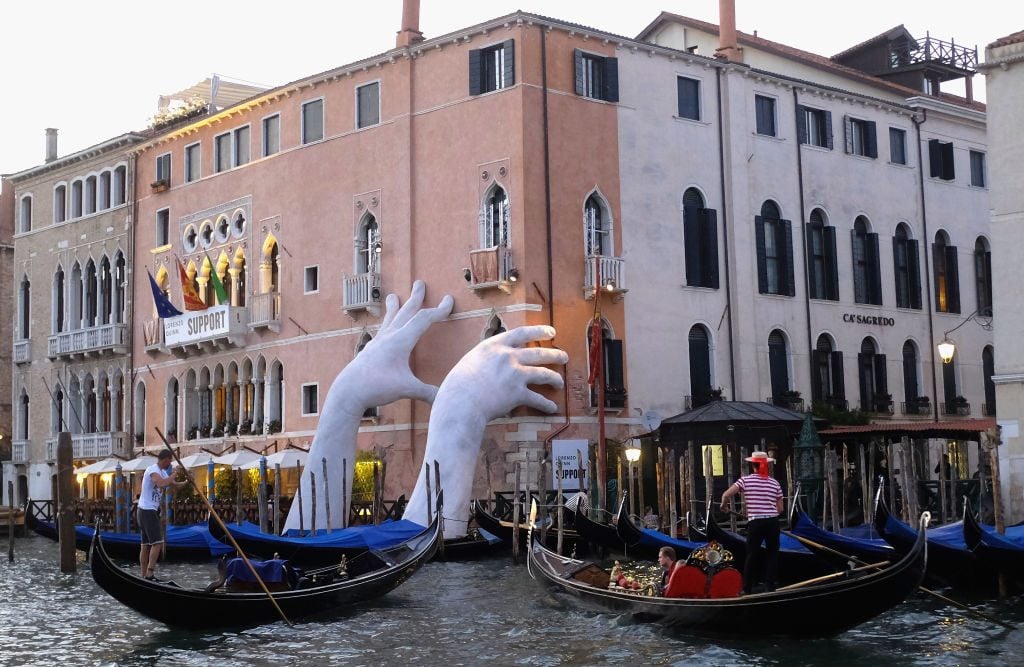
Sure, it’s not all about sales—but it’s at least a little about sales.

The first rule of sales at the Venice Biennale is that we don’t talk about sales at the Venice Biennale. The sole purpose of the exhibition is “making art available to people to encourage new thoughts and ways of seeing the world, rather than selling works,” Ralph Rugoff, the artistic director of the event in 2019, told Artnet News.
“The International Art Exhibitions of La Biennale di Venezia is not a fair,” Maria Cristiana Costanzo, the biennale’s head of communications, added. And, lest there be any confusion, she affirmed, “we decided to remove art dealers’ names from the exhibition labels since the 2019 edition.”
Still, whispers about sales in Venice have carried, evidenced by various headlines over the years describing the biennale more or less as the best art fair in the world. It provides the occasion for the François Pinaults of the world to snag Sigmar Polkes away from museums for their own private collections, and for oligarchs to anchor their yachts in the crystal-blue lagoon (that is, if those vessels haven’t been impounded yet). It’s for this reason that galleries and private donors regularly shoulder the significant costs of shipping and insuring their artists’ works; six months of renting and staffing exhibition spaces; plus hosting lavish luncheons, dinners, and aperitivi. The result of their investments is arguably the world’s premier exhibition of contemporary art. So, surely the commercial entanglements can’t be all bad? But with market players determined to keep their business activities at the biennale under wraps—the question is, how does it all work?
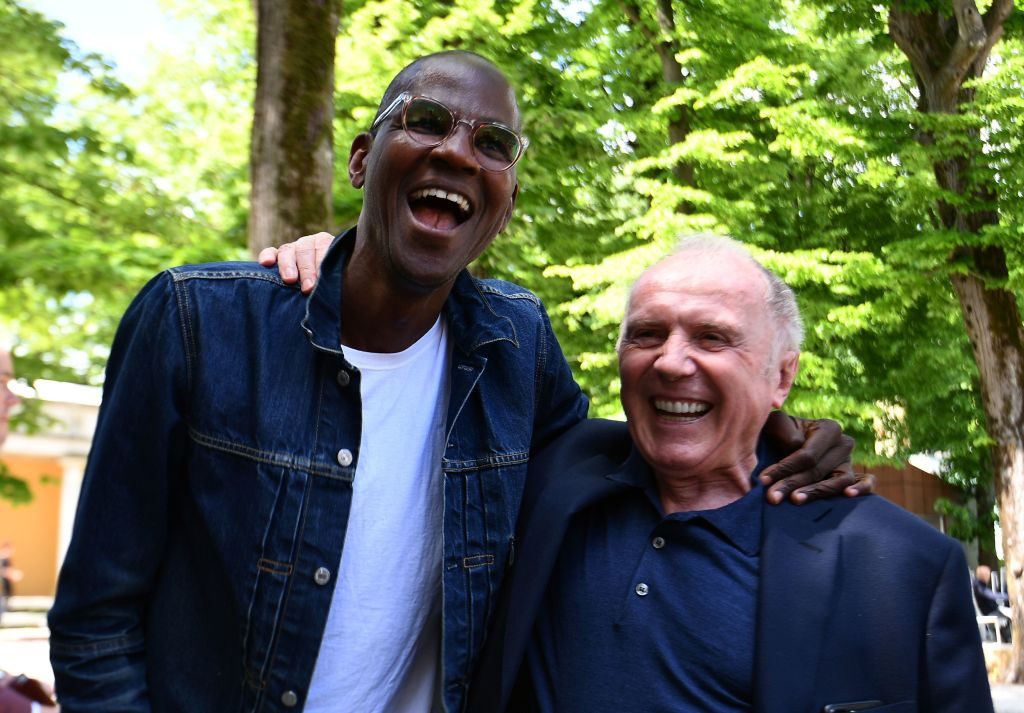
Artist Mark Bradford jokes with French businessman and art collector Francois Pinault during an interview with AFP on May 9, 2017, at the 57th International Art Exhibition in Venice. Photo: Vincenzo Pinto/AFP via Getty Images.
Given the prestige of the Venice Biennale, “Talking about it in terms of sales and money-making is in itself a bit problematic,” one art-world publicist told Artnet News, speaking on background. They did, however, go on to specify that the Biennale is “less a selling event than a marketing event.”
The distinction there is that dealers and advisors are sometimes less interested in moving inventory on site than elsewhere, especially when a large chunk of the works on site are unsellable for various reasons. They might be performance-based, like the Golden Lion winners of the last two editions, or on loan from institutional collections, as is the case of many of the deceased artists making up almost half of Cecilia Alemani’s exhibition, “The Milk of Dreams.”
In the Swiss Pavilion this year, artist Latifa Echakhch’s presentation of sculptures assembled from the reclaimed materials of previous biennales is slated for dismantling and recycling when the biennale ends. Not coincidentally, works “loosely related to her Venice presentation” are available at her ongoing solo exhibition at Pace London, senior gallery director Karine Haimo informed Artnet News, and more will be shown in her solo booth scheduled for Frieze New York in the fall.
“As a commercial gallery, we’re focused on the sales aspects within our walls,” Haimo said, meaning, rather than in the Giardini. That said, she stressed that sales “really take sort of a backseat to the actual realization of the projects.”
London-based Sibylle Rochat, one of the many advisors who will be attending this year’s vernissage, described the prestige of an artist being included in the biennale as a useful kind of “validation” for her clients, whether it affirms their previous support of that artist’s work, or inspires potential support in the future. “It’s a nice introduction, for example, if there’s an artist that I really love but is quite expensive,” she said. “It’s going to be easier for me when we come back to say ‘Do you remember that artist that we saw in Venice that you loved so much? This is available, and I think it would fit your collection.’”
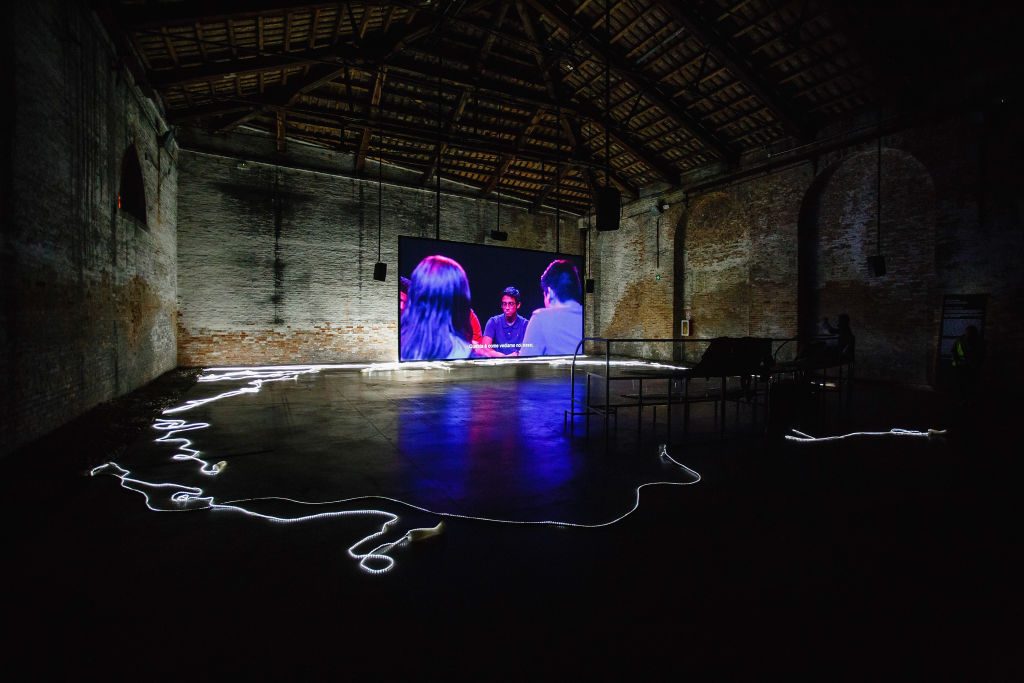
Adelita Husni-Bey, The Reading (2017). Installation view of the Italian pavilion at the 2017 Venice Biennale. Photo: Awakening/Getty Images.
For the work that is available, the buying process is not so mysterious. As with a fair, it can be as simple as contacting the artist’s gallery and asking about pricing and availability—just wait til you’re outside.
“You can’t enter the pavilion, see a gallery director and say ‘Hey, long time no see, how much is this?’” London- and Milan-based advisor Mattia Pozzoni said. “That would be incredibly rude under any circumstance.”
Often, a purchase isn’t “something that you can decide there and then,” he adds, “because we’re not talking about $50,000 or $100,000 paintings—the works are a little more ambitious and more expensive.” Martin Puryear’s sculptures in the 2019 U.S. Pavilion, for example, were priced between $1.5 million and $4 million.
Consequently, the collectors who do take works home also tend to have the means to exhibit them: Pinault inaugurated Punta della Dogana with his Sigmar Polkes; Jochen Zeitz swept the 2013 biennale to eventually fill Africa’s largest contemporary art museum; Peter Brant has shown his pieces by Urs Fischer and Steven Shearer from the 2011 Biennale in the Brant Foundation; and the Rachofskys have shown Guy Ben-Ner’s Treehouse Kit from the 2005 Israeli Pavilion at the Rachofsky House.
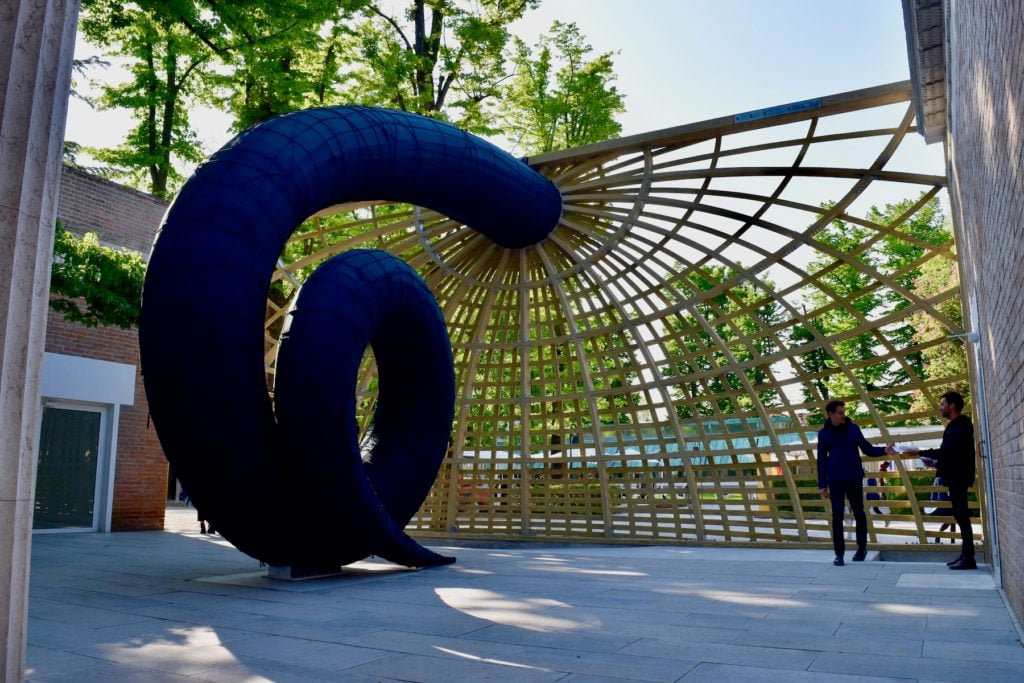
Martin Puryear’s Swallowed Sun (Monstrance and Volute) (2019) at the U.S. Pavilion in Venice, 2019. Courtesy Ben Davis.
Essential to securing work by a major artist at the biennale, Pozzoni says, is to be “on the front lines to support the artist at the biennale,” which means sponsoring presentations, or having shown a longstanding interest. In contrast to an art fair’s frenetic, adrenalized pace, everything is a long conversation; Milan-based collector Sveva Taurisano of Collezione Taurisano knew that she wanted to buy the 2017 Italian pavilion’s video installation by Adelita Husni-Bey nearly a year before it debuted. “We were privileged because we had the relationships with the curator, the artist, and the gallery, and we could follow the process as the piece was born,” she said. “We committed to buying early; there is no putting the Venice Biennale on hold.”
The works shown in Venice invariably influence what’s sold at commercial fairs for the next two years, but the sheer caliber of both work and collector is a major distinction between the two. “In the same sense that super fancy people don’t walk the fairs themselves—they send a rep, advisor, or staff—Venice is where they would actually view art IRL,” Los Angeles-based advisor Harmony Murphy said. And while seasoned art collectors come to the biennale “to pursue an intellectual curiosity,” Rochat said, novice or speculative buyers are also unlikely to come to the vernissage at all. “There’s nothing of interest there for them.”
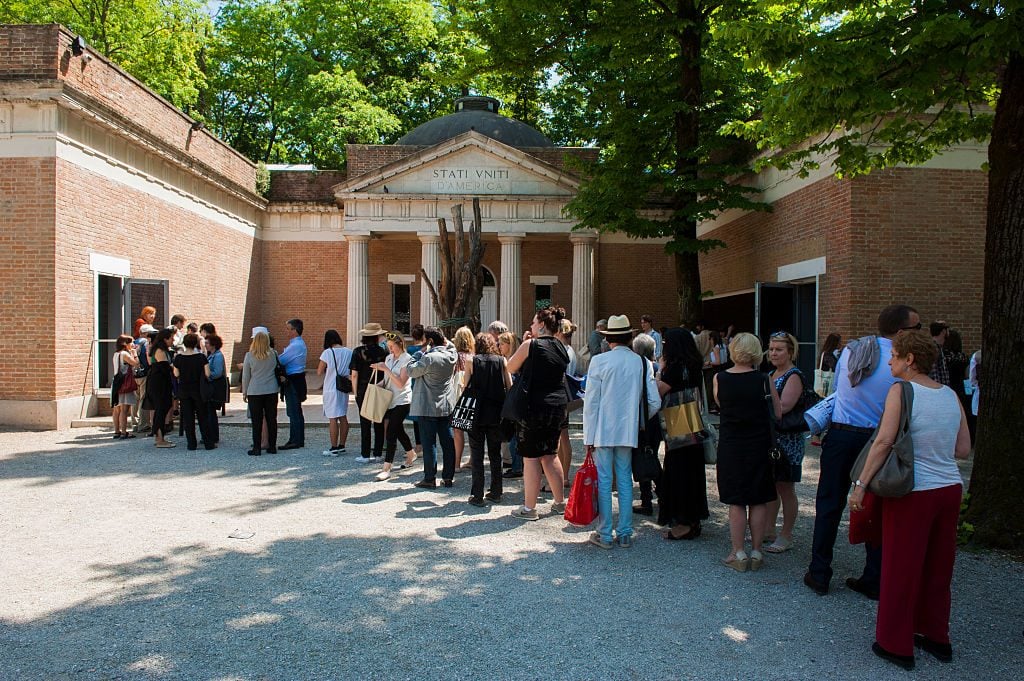
People queuing for the U.S. Pavillion at the Venice Biennale, May 2015. Photo: Romano Cagnoni/Getty Images.
“Until 1973, the biennale had a sales office, and it was pretty straightforward,” Pozzoni says, recalling an era when sales weren’t so maligned. “It’s not that I’m an advocate of reopening it, but I do think that in 2022, we can stop pretending to be so naïve; at the end of the day, these galleries are paying for the show to go on, and so I think it’s normal that they would try to benefit.”
Across the board, everyone agrees that regardless of the market aspects underwriting the world’s premiere contemporary art exhibition, the true focus remains the art, then the ensuing conversations between dealers, collectors, journalists, and especially, given the institutional scale and quality of the works on view, curators and museum directors.
“You get together in the same way that it happens at trade fairs: there’s a social aspect and a business aspect,” Marta Fontolan, senior director of Sprüth Magers Los Angeles said. (But because it can be “difficult to concentrate” during the vernissage, Monika Sprüth also noted that “many important collectors visit later.”)
To maximize your time in Venice, Pozzoni recommended “deciding on three or four things you can’t miss, then wandering the rest of the time.” Taurisano keeps tabs of exhibition locations on Google Maps; Haimo makes restaurant reservations months in advance; and Rochat organizes a chart of events by day, prioritizing exhibitions by artists that she knows the least about: “I try to get out of my comfort zone,” she said.
Murphy remains unbothered by the reality of sales. “If contemporary art and the market are so fully intertwined, is it even a relevant critique to distinguish those aspects anymore?” she asked. “If these artists are getting paid, so be it. Maybe we’re the generation that kills the starving artist myth.”